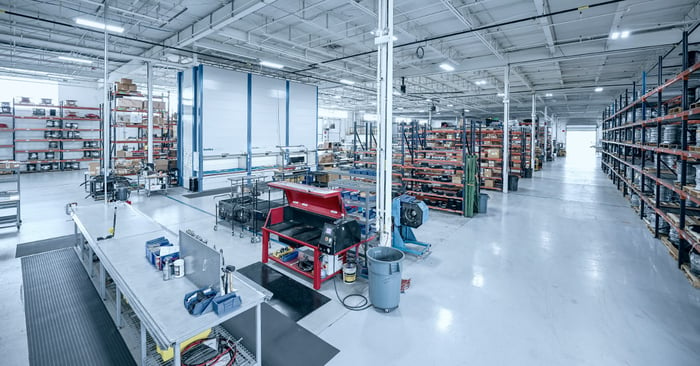In today's digital age, e-commerce has become the go-to shopping method for millions of consumers around the world. As a result, businesses are facing increasing pressure to provide fast, accurate, and efficient order fulfillment to meet customer expectations. Here, we’ll dive into the importance of e-commerce order fulfillment, challenges of integrating e-commerce fulfillment into your existing order fulfillment operations and the e-commerce order fulfillment process - and solutions, including Automated Storage and Retrieval Systems (ASRS) - to optimize your operations.
The Importance of E-commerce Order Fulfillment
E-commerce order fulfillment is the process of storing, picking, packing, and shipping products to customers after they have placed an order online. How you fulfill e-commerce orders (aka your e-commerce fulfillment process) is critical for several reasons:
- Customer satisfaction: Timely and accurate order fulfillment directly impacts customer satisfaction. When customers receive their orders quickly and without errors, they are more likely to become repeat customers and recommend your business to others.
- Competitive edge: Efficient order fulfillment can set your business apart from competitors. Fast shipping and high order accuracy can be significant selling points for online shoppers, helping you attract and retain customers.
- Cost reduction: Optimizing the order fulfillment process can help businesses reduce labor, storage, and shipping costs. Streamlining operations and implementing cost-effective solutions can improve overall profitability.
For a deeper dive: How to Calculate (and Reduce!) Your Fulfillment Costs Per Order
Current Challenges in E-commerce Order Fulfillment
As e-commerce continues to grow, businesses face several challenges in incorporating e-commerce fulfillment into their existing order fulfillment processes:
- Increasing order volumes: The rapid growth of e-commerce has led to a surge in order volumes, placing pressure on businesses to process and fulfill a larger quantity of smaller line items orders quickly and efficiently.
- Customer expectations: Today's online shoppers expect fast shipping, accurate order fulfillment, and easy returns. Meeting these expectations can be challenging, especially for businesses with limited resources or outdated systems.
- Inventory management: Due to the speed at which e-commerce moves, maintaining accurate inventory levels and avoiding stockouts or overstocks is a significant challenge in e-commerce order fulfillment. Poor inventory management can lead to lost sales, increased costs, and dissatisfied customers.
- Scalability: Seasonal demand fluctuations or rapid e-commerce growth can strain order fulfillment processes. Businesses need to have the ability to scale their operations up or down to meet changing needs.

The E-commerce Order Fulfillment Process
The order fulfillment process, also called pick and pack, typically involves the following steps:
- Receiving and storing products: Products are received from suppliers and stored in a warehouse or distribution fulfillment center.
- Order processing: Customer orders are received through e-commerce platforms and processed by warehouse management systems (WMS).
- Picking: Warehouse staff retrieve the ordered items from storage locations using pick lists or other guidance provided by the WMS. Due to the low order lines common with e-commerce orders it’s typical to pick the items directly into the shipping box for increased efficiencies.
- Packing: The items in the order are verified and appropriate documents (such as a packing slip) are added to the order.
- Shipping: Packages are labeled with shipping information and delivered to customers via the chosen shipping carrier.
Optimizing E-commerce Order Fulfillment with ASRS
Automated Storage and Retrieval Systems (ASRS) can help businesses optimize their e-commerce order fulfillment processes through automation and advanced technology. ASRS offers several benefits:
- Improved efficiency: ASRS can significantly reduce the time it takes to pick and pack items, as the automated goods-to-person solutions automatically retrieve products and deliver them directly to warehouse staff when needed.
- Enhanced accuracy: ASRSs are integrated with pick-to-light technology to increase pick accuracy up to 99.9%. Using a combination of LED displays and light pointers, the worker is guided to the exact storage location of the item. The pick-to-light technology additionally displays the part number and quantity for the worker to pick, reducing human error and increasing order accuracy.
- Scalability: Using an automated system, labor can be scaled up or down to accommodate fluctuating order volumes, making it an ideal solution for e-commerce businesses experiencing seasonal demand or rapid growth.
- Space utilization: ASRS systems make better use of overhead vertical space. Using the full floor to ceiling height provides more storage density and can recover up to 85% of existing warehouse space.
- Integration with WMS: ASRS can be integrated with a variety of warehouse management systems, providing improved inventory control and real-time inventory for improved warehouse operations.
In addition to integrating ASRS, e-commerce operations should also consider other solutions to optimize their e-commerce order fulfillment processes, such as:
- Adopting an e-commerce specific fulfillment strategy: Since e-commerce tends to generate more orders that are smaller in size (more order volume, lower lines per order) – it makes sense for traditional order fulfillment operations to adopt a specific e-commerce fulfillment strategy. Pick and pack is the most common e-commerce fulfillment strategy, learn more about it in this blog post: Optimizing the Pick and Pack Fulfillment Process
- Implementing robust warehouse management software (WMS): A WMS can help manage inventory, streamline order processing, and improve overall warehouse efficiency.
- Outsourcing fulfillment: Partnering with a third-party logistics (3PL) provider can be an effective way for businesses to optimize their e-commerce order fulfillment, particularly if they lack the resources or expertise to manage the process in-house.
- Continuous process improvement: Regularly monitoring and analyzing order fulfillment performance can help businesses identify areas for improvement and make necessary adjustments to maintain peak efficiency.
E-commerce order fulfillment plays a crucial role in the success of online businesses. By understanding its importance, addressing the challenges, and implementing solutions like Automated Storage and Retrieval Systems (ASRS), businesses can optimize their processes, improve customer satisfaction, and stay competitive in the fast-paced world of e-commerce. Investing in advanced technologies, embracing best practices, and continually monitoring and improving the order fulfillment process can help businesses thrive in this ever-evolving industry.





